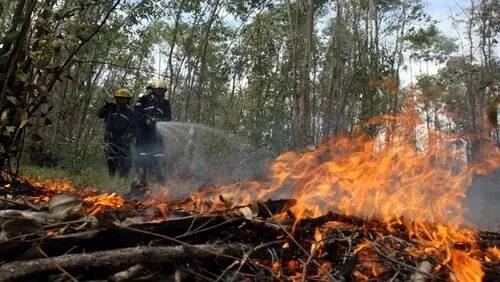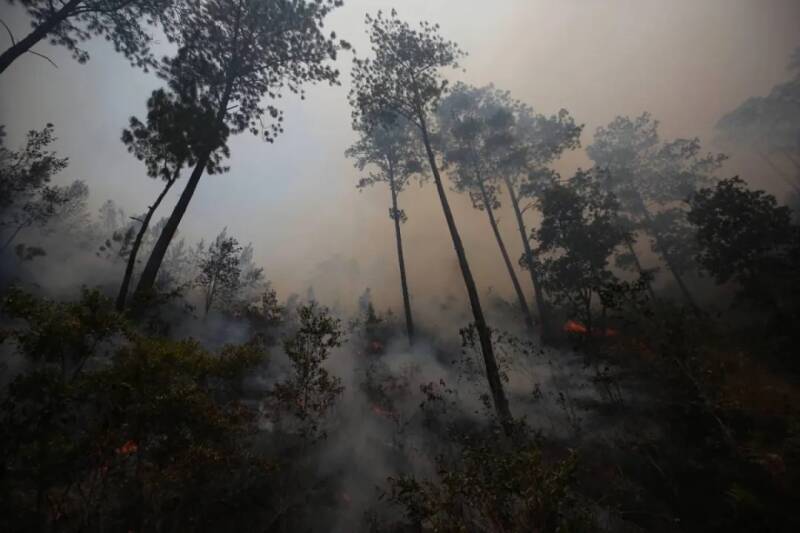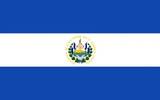Red warning! Heavy air pollution in Honduras affects coffee industry
It is understood that Honduras is the largest producer and exporter of washed Arabica coffee in Central America, but recently Honduras suffered from weather changes and other problems, resulting in a decline in production and exports.
The decline in production and exports is mainly due to recent weather changes and bad weather in the country.
Earlier, the Honduran Forest Conservation Institute (ICF) released data that since 2024, temperatures in Honduras have reached a new high, with high temperatures and dry weather leading to frequent fires, and large areas of mountains and forests are on fire, experiencing the hottest and driest year since 1992, with the highest temperature reaching 38-40 ℃.

According to data, there have been 1903 forest fires across Honduras, causing more than 150000 hectares of forest to be engulfed by the fire. At one point, smoke from the fire forced the temporary closure of the Aeropuerto Internacional Tonc í n International Airport in the capital city of Tegucigalpa (Tegucigalpa).
Due to agricultural incineration, forest fires, exhaust emissions, industrial exhaust and other factors, the air quality in Honduras is very poor, and it has become the third-lowest country in the world.
As a result, the Secretariat of the National Office of risk and Emergency Management of Honduras recently stated that due to severe air pollution, there are PM1, PM2.5 and PM10 particles in the air, as well as toxic gases such as carbon monoxide, carbon dioxide, sulfur dioxide and ozone from vehicle traffic, and dense smoke layers lead to higher temperatures and reduced visibility.
It was also announced that from May 7, the Central area (Distrito Central) will launch a red alert indefinitely and other parts of the country will launch a green alert to monitor pollution.
According to the Honduran Environmental risk Management Agency, smog such as air pollution will continue indefinitely until the wind changes, the atmosphere above is unstable and the rainy season begins.
However, due to the influence of El Ni ñ o, the rainy season that originally arrived in May has been postponed, and according to Honduran weather monitoring data, the national rainfall in Honduras will be nearly 40% less than in the same period last year.
In this regard, IHCAFE is very concerned, as it is the growth and flowering of coffee trees in Honduras, heavy air pollution and reduced rainfall will adversely affect the growth and yield of crops.
At present, the central area with the most serious air pollution is also located in the two producing areas of Conayagua and El paraiso, which account for 16% and 12% of the national coffee production respectively.
Air pollutants such as sulfur dioxide and ozone can hinder the process of photosynthesis such as plants, resulting in lack of nutrient synthesis, oxidation and fall of leaves. In addition, harmful substances such as particles will deposit on the surface of plants, hinder the opening of stomata, hinder plant transpiration, and lead to drought and reduced production of crops.

As a result, according to data published by the Honduran Coffee Institute (IHCAFE), the country exported 19.32 million bags of 60 kg coffee from October 2023 to March 2024, a decrease of 3.71 per cent compared with the previous year.
However, according to the latest April data, Honduras exported a total of 760000 bags of 60 kg coffee, an increase of 2.29% over the same period last year, but coffee exports have decreased by 2.09% since 2023, compared with the same period last year. Coffee exports are expected to decrease by 6.6% year on year in 2023.
Important Notice :
前街咖啡 FrontStreet Coffee has moved to new addredd:
FrontStreet Coffee Address: 315,Donghua East Road,GuangZhou
Tel:020 38364473
- Prev

Introduction to the coffee producing areas, coffee varieties Pacas and Pacamara in El Salvador, Central American countries
In Central America, there are many coffee-producing countries, such as Costa Rica, Nicaragua, Panama, El Salvador, etc. Among them, El Salvador can be said to be one of the countries with the smallest land area. Although the output is much lower than that of other countries, El Salvador has a unique planting environment and diversified flavor performance. sa
- Next

How to draw American coffee? What is the principle of latte flowers? How to steam espresso?
The birth of coffee pulling flowers has added great appeal to dairy espresso. Even people who have never been exposed to coffee will be attracted by the exquisite pulling flowers pattern and order a cup of "bitter" that they have never experienced in life. The act of pulling flowers is called "Latte Art", Latte Art. Care big
Related
- Law Enforcement Bureau? Mixue Ice City enters Zhengzhou BRT platform!
- Heavy! Nestlé has been exposed to consider selling blue bottle coffee!
- Compensation of 270 million yuan! Starbucks has been charged with violating labor laws more than 500,000 times!
- What are Xizhao coffee beans? Why did they become champion beans? How to rush to the manor on the dividing line in Colombia?
- What does channel effect mean in coffee? Why are there holes in the coffee powder cake?
- How much do you add to the milk for latte, Australian white and cappuccino? What is the ratio of coffee to milk between latte and frill?
- What is the cause of coffee astringency? Why does the brewed coffee feel astringent?
- The industry is heavy! Lucky will open its first store in Taiwan in December?!
- Unbelievable! Does one person at Starbucks wear a tiger head set and hold a mace to order?!
- Return to the way you came from?! Some cities in Mixue Ice City are selling breakfast!

